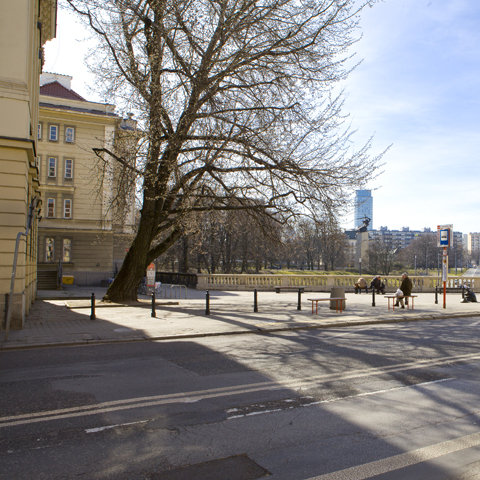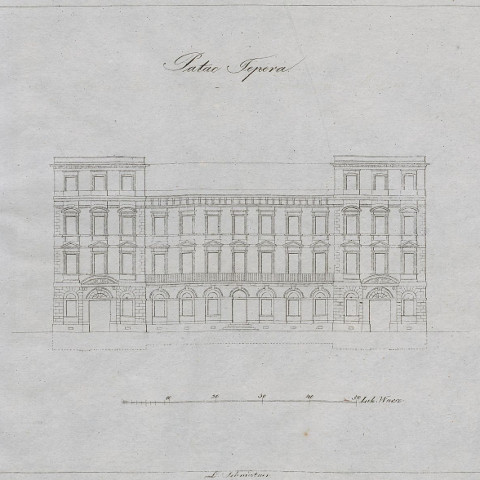Composers / Fryderyk Chopin / Places catalog
‘Pod Kopciuszkiem’ and ‘Dziurka’
The buildings on ul. Miodowa once included Tepper Palace, which was destroyed during the Second World War and never rebuilt, as the tunnel of the W-Z Route was planned for the site. It was home to the ‘Pod Kopciuszkiem’ [Cinderella] café, on the ground floor, and the ‘Dziurka’ [Keyhole] café, on the mezzanine. The latter was thus named because access was via an extremely narrow doorway.
The palace was built in the classical style, during the second half of the eighteenth century, by the famous Warsaw banker Piotr Fergusson Tepper. In 1822, it was purchased at auction by the wealthy merchant Mikołaj Grabowski, who was to become the father-in-law of Konstancja Gładkowska, Chopin’s youthful love.
The ground-floor ‘Pod Kopciuszkiem’ café was a popular haunt for National Theatre actors, musicians, conductors, writers and journalists. The overall mood was conservative, and conversations tended to be dominated by the Classical camp. One group of regulars was famous for discussing and disputing the latest happenings in the cultural life of the capital. ‘I would have liked to have been at Kopciuszek’s in order to hear the debates that must have taken place concerning my person’, Chopin wrote in March 1830 after giving a concert at the National Theatre.
The ‘Dziurka’, also known as ‘Dziurka Marysi’ [Mary’s hole], was frequented by the younger generation of Romantics. These included students and young artists, such as Chopin, aged around twenty. It was most likely here, and not, as previously thought, in the nearby ‘Honoratka’ café, that the radicals associated with the Patriotic Society conferred prior to the November Uprising.
-

Miodowa Street and Route W-Z tunnel. Place where were located ’Pod Kopciuszkiem’ and ’Dziurka’. Phot. Waldemar Kielichowski.
-

Miodowa Street. Place where were located ’Pod Kopciuszkiem’ and ’Dziurka’. Phot. Waldemar Kielichowski.
-

The plan of doesn’t exist today Tepper Palace. Phot. Zbiór celnieyszych gmachów miasta stołecznego Warszawy : częścią z natury zdjętych, a częścią podług istniejących planów rysowany i litografowany przez Leonarda Schmidtnera. Mazowiecka Biblioteka Cyfrowa.